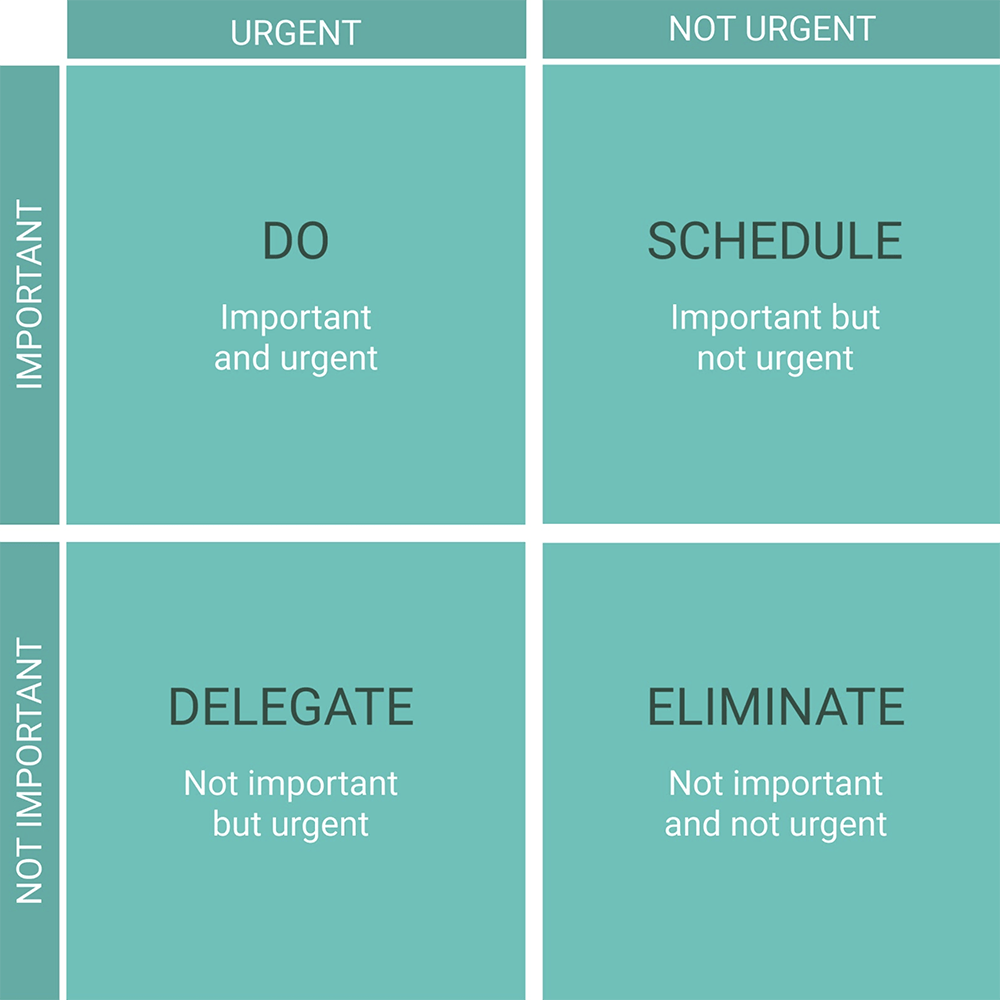This Simple Technique Will Turn You Into a Productivity Pro
General Eisenhower was famous for prioritizing tasks by levels of urgency and importance. Here's his secret.
Steven Puri
Save time with Sukha
Understanding the Eisenhower Matrix
Learning how to organize and label your daily tasks makes a big difference in productivity.
Specific and discrete task names will help you stay focused on one assignment without being distracted, keeping you within the guardrails of that activity and allowing you to achieve more in less time.
These specific names will give you a greater sense of control at a more granular level.
One method for helping you accomplish this control is the Eisenhower Matrix.
General Dwight D. Eisenhower was famous for leveraging the specificity of task names to help to prioritize his tasks by levels of urgency and importance.
The methodology inspired by his name, also known as the Urgent-Important Matrix, was developed during his eight years as president (1953-61). The matrix is broken down into four buckets.
- The first quadrant is filled with tasks that need attention immediately.
- The second quadrant is filled with tasks that need your attention soon but can be scheduled in the next few days.
- The third quadrant involves tasks that can be delegated to others—they need to be done but are not the most pressing issues.
- Finally, the fourth quadrant represents tasks that you actually don't need to do. In fact, focusing on them is wasting your time.
Mastering Task Management
Eisenhower would start with the first bucket of specific tasks and work his way down from there. This organizing strategy will help you be more productive at the start of your day and help you stay motivated until evening.
This method helps you think about task payoffs rather than task completion.
The Mere-Urgency Effect states that you waste time by focusing on irrelevant tasks. File those into the fourth quadrant to make better use of your day.
Every morning, look at your Task List and identify those tasks that are the most important and urgent. Tackle these first.
From there, move onto important but not urgent Tasks. Practice this method of sorting your Tasks based on importance and urgency, rather than just urgency.
Here are other methods to help with prioritizing your tasks and managing your time:
- Focus on mono-tasking
- Following The Pareto Principle
- Start with your Most Important Task (MITs)
- The 5 Minute Challenge
- Setting S.M.A.R.T Goals
